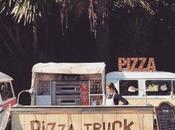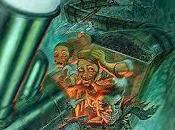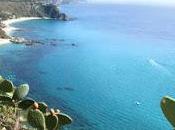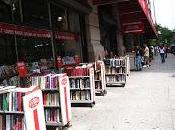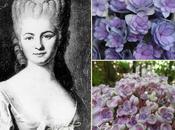“Voltandoci verso Nord, affrontando il Nord, entriamo nel nostro inconscio.
Sempre, in retrospettiva, un viaggio nel Nord assume i colori del sogno.”
“Turning to face Noth, face the North, we enter our own unconscious.
Always, in retrospect, the journey North has the quality of dream.”
Margaret Atwood
![Il freddo, l’Arte e le parole [Cold, Art and Words]: Intervista ad Acacia Johnson Progetto](http://m2.paperblog.com/i/262/2628813/il-freddo-larte-e-le-parole-cold-art-and-word-L-YMnc54.png)
La nostra Artista del Mese e nuova amica si chiama Acacia Johnson ed è una di quelle fotografe che restano impresse nel cuore e nella mente, come le sue immagini rimangono impressionate sulla pellicola. Il suo stile vaga dal sonno alla veglia, dall’immobilità al furore, il tutto immerso nel gelido ambiente artico dove vive ora. L’amore per le sue fotografie è stato istantaneo e, per fortuna, siamo riusciti a fare due chiacchiere con lei sulla fotografia, l’arte e un po’ della sua vita. Speriamo che il suo lavoro vi piaccia tanto quanto piace a noi.
Our Artist of the Month and new friend’s name is Acacia Johnson; she’s one of those photographers who remain impressed inheart and mind, as her pictures are impressed on film. Her style wanders back and forth from sleep to wake, stillness to fury, and all of this is immersed in the icy Arctic environment where she lives now. Our love for her photographs was instantaneous and, luckily, we were able to have a chat with her about photography, art and a bit of her life. We hope you enjoy her work as much as we do.
![Il freddo, l’Arte e le parole [Cold, Art and Words]: Intervista ad Acacia Johnson Progetto](http://m2.paperblog.com/i/262/2628813/il-freddo-larte-e-le-parole-cold-art-and-word-L-CbBJO1.png)
Quando hai cominciato a fare fotografie? Com’è cominciata la tua passione?
Ti ricordi quelle macchine fotografiche usa e getta degli anni ’90? Ho una memoria molto vaga della prima, vera macchina fotografica ricevuta come regalo di Natale quando avevo nove o dieci anni. Era una di quelle rozze, prima fotocamere digitali con un piccolo schermo sul retro. Aveva una copertura scorrevole color oro. L’ho distrutta quasi subito portandola fuori e facendola riempire di sabbia.
Ho anche delle reminiscenze di mio padre e mio nonno, delle loro incredibili fotografie di viaggio e le proiezioni dopo cena, con quella vibrante pellicola a colori e la polvere che splendeva nel fascio di luce del proiettore – lo scivolare in una stanca, sognante trance guardando le immagini click, frrrrr, e di nuovo click. Il senso di aspettativa quando sapevi che stava per venirne una buona e il modo in cui riempiva la parete, illuminata.
A sedici anni mi sono anche iscritta ad un fantastico laboratorio di fotografia al liceo, in un centro per le carriere, seguito da un fenomenale anno di supporto e incoraggiamento al liceo della Norvegia del Nord dove ho studiato come studentessa straniera in uno scambio culturale, e i miei studi si concentravano sopratutto sui media e studi della comunicazione. è da lì che ho cominciato davvero a decollare. è stato il primo inverno al circolo polare artico.
When did you start taking pictures? How did your passion begin?
Remember the grocery-store disposable cameras of the 1990s? I have a faint memory of receiving my very first real camera for Christmas when I was nine or ten. It was one of those clunky, early digital cameras with a tiny glass screen on the back. It had a sliding gold-colored cover. I promptly destroyed it by taking it outside and getting it full of sand.
I also trace things back to my father and grandfather, to their incredible travel photographs and after-dinner slideshows with all the vibrance of color positive film and the dust shimmering in the beam of the projector light and sinking into a tired, dreamlike trance watching the images click, whirr, click past. The anticipation when you knew a good one was coming, how it filled the wall, illuminated.
I also enrolled in a fantastic high school photography program at a career center when I was sixteen, followed by a year of phenomenal support and encouragement at the high school in northern Norway I attended as an exchange student, which focused in media and communication studies. That’s when it really took off. That was the first winter I lived above the Arctic Circle.
![Il freddo, l’Arte e le parole [Cold, Art and Words]: Intervista ad Acacia Johnson Progetto](http://m2.paperblog.com/i/262/2628813/il-freddo-larte-e-le-parole-cold-art-and-word-L-8qYDI9.png)
![Il freddo, l’Arte e le parole [Cold, Art and Words]: Intervista ad Acacia Johnson Progetto](http://m2.paperblog.com/i/262/2628813/il-freddo-larte-e-le-parole-cold-art-and-word-L-lsV6Gn.png)
Vivi nel Nord, in un ambiente estremamente freddo. Il posto in cui vivi influenza la tua arte, in qualche modo?
Mi piace come tutti presumano che io sia costantemente immersa in qualche ghiacciata avventura polare. Quello che molte persone non sanno è che ho speso gli ultimi tre anni in un appartamentino sopra un ristorante italiano nel bel mezzo di Rhode Island! In quel periodo andavo in Alaska, Norvegia, Islanda, eccetera, per fare fotografie, ma poi tornavo a scuola e passavo mesi su mesi a sviluppare i negativi. Nel brano radiofonico di Glenn Gould L’idea del Nord, qualcuno dice che non puoi parlare del Nord finché non ne sei fuori. Non so se è vero, ma ci penso su qualche volta.
Ma, per rispondere alla tua domanda, sì. Penso che tutto quello che riguarda il mio fare arte sia influenzato dai paesaggi dove sono stata cresciuta, e dagli altri con cui ho sentito un’affinità. Amo il Profondo Nord e sono stata abbastanza fortunata da viaggiare lì, lavorarci e viverci. Sono la sua austera bellezza, la sua vastità, il suo silenzio, la sua luce fine che mi fanno sentire più viva, e che mi ispirano a continuare a fare. È come vivere in un sogno.
Al contrario di quanto pensa la maggior parte delle persone, comunque, non ho vissuto in un ambiente “estremamente freddo” fino a circa tre settimane fa. Sono considerata una “del sud” qui nell’Artico Canadese. Mi viene freddo più velocemente di qualunque altra persona che conosca, e indosso una quantità assolutamente folle di vestiti per riparare. Ma mi congelo ancora.
You live in the north, in an extremely cold environment. Does the place you live in influence your art in any way?
I like how everyone assumes that I am constantly immersed in some frigid polar adventure. What many people don’t know is that I spent the last 3 years living in a tiny apartment above an Italian restaurant in urban Rhode Island! During that time I would make trips to Alaska, Norway, Iceland etc to photograph, but then return to school to spend countless months processing the negatives I had shot. In Glenn Gould’s radio piece The Idea of North, someone claims that you can’t talk about the North until you’ve gotten out of it. I don’t know if that’s true, but I think about it sometimes.
But, to answer your question, yes. I think everything about my artmaking is influenced by landscape where I was raised, and the others that I have felt an affinity to since that time. I love the Far North and have been fortunate enough to travel, work, and live all across it. It is the austere beauty, vastness, silence, and subtlety of light there that makes me feel most alive, and what inspire me to keep making. It is like living in a dream.
Contrary to what most people think, though, I haven’t lived in “extreme cold” environments until about three weeks ago. I am considered a “southerner” here in the Canadian Arctic. I get colder faster than anyone I know, and wear an absolutely insane amount of clothing to make up for it. I still freeze.
![Il freddo, l’Arte e le parole [Cold, Art and Words]: Intervista ad Acacia Johnson Il freddo, l’Arte e le parole [Cold, Art and Words]: Intervista ad Acacia Johnson](http://m2.paperblog.com/i/262/2628813/il-freddo-larte-e-le-parole-cold-art-and-word-L-trmGHP.jpeg)
Molte delle tue foto sono come delle favole. Ci sono delle storie dietro ognuno dei tuoi progetti, o delle storie che cerchi di raccontare con le tue fotografie?
Credo che il mondo sia pieno di significati e messaggi – magia, se vuoi – se ti mantieni sempre attenta e aperta. In un paesaggio capitano questi incontri, e faccio delle foto, ma il loro peso si può descrivere solo con la scrittura. A parte qualche rara eccezione, devo ancora collegare seriamente la mia scrittura e il mio immaginario, ma credo sia solo questione di tempo. In ogni caso, c’è assolutamente qualcosa oltre l’immagine, che ne scriva o no. Ci sono anche molte storie personali che mi ritrovo a raccontare, collegate anche alla lotta fisica nel creare le immagini – specialmente nella serie Polaris – ma non hanno niente a che fare con il lavoro.
Many of your pictures are like fairy tales. Are there some stories behind every project of yours, or tales that you like to represent with your pictures?
I believe the world is full of significance – magic, if you will – if you remain open and attentive. Out in the landscape these encounters happen, and I make pictures, but the weight of them can only be described through writing. With very limited exceptions, I have yet to seriously link my writing and my imagery, but I think it lies ahead. The experience, in any case, of something beyond the image, is definitely present whether written or not. There are also many personal stories I often find myself telling, related to the physical struggle of making the images – especially the Polaris series – but they don’t have anything to do with the work.
![Il freddo, l’Arte e le parole [Cold, Art and Words]: Intervista ad Acacia Johnson Il freddo, l’Arte e le parole [Cold, Art and Words]: Intervista ad Acacia Johnson](http://m2.paperblog.com/i/262/2628813/il-freddo-larte-e-le-parole-cold-art-and-word-L-5nzFS2.jpeg)
Quanto c’è di te nelle tue foto?
Questa è una domanda che mi scopro a chiedermi continuamente, e la risposta è in costante evoluzione. Pensi di stare facendo delle fotografie di qualcos’altro, ma poi il tempo passa e vedi che tutto è solo un diario, o un flusso di coscienza, o una storia d’amore. È difficile da dire, in ogni dato momento. Ma la mia connessione personale alle foto di solito è immensa, molto più grande di quella che si trasmette nel risultato finale.
How much of you is in your pictures?
This is a question I continuously find myself returning to, and the answer is always evolving. You think you’re making pictures of something else, but then time passes, and you see it’s all just a diary, or a train of thought, or a love story. It is hard to say, at any given time. But my personal connection to the photos is usually immense, more so than comes through in the final series.
![Il freddo, l’Arte e le parole [Cold, Art and Words]: Intervista ad Acacia Johnson Il freddo, l’Arte e le parole [Cold, Art and Words]: Intervista ad Acacia Johnson](http://m2.paperblog.com/i/262/2628813/il-freddo-larte-e-le-parole-cold-art-and-word-L-IjmIo2.jpeg)
Quali sono gli strumenti e le tecniche che preferisci? Ti piace di più la tecnica analogica o quella digitale per fare le tue foto?
Preferisco la pellicola a colori e una macchina fotografica a lastre 4×5. È difficile e soddisfacente, e stringere i negativi sviluppati fra le tue mani è la sensazione più magica di prova, di una prova tangibile del tuo lavoro. Mi obbliga ad impegnare ogni fibra del mio essere nella creazione di un’immagine. Comunque, porto con me anche una fotocamera digitale perché è veloce e versatile, e a volte ci sono cose che letteralmente non posso catturare con la 4×5, per una serie di ragioni, e in quei casi ammetto le immagini digitali. (Come mi è successo oggi, su una slitta in movimento, nell’oscurità). Ma non sento mai di aver fatto la foto se è in digitale – mi sembra presa, nel modo sbagliato, ed è una sensazione che mi perseguita.
Which are the tools and techniques you prefer? You prefer the digital or the analogical way of taking pictures?
I prefer color 4×5 color film and a view camera. It is difficult and rewarding and holding the developed negative in your hands is the most magical feeling of evidence, of tangible proof. It forces me to engage every fiber of my being in the making of the image. However, I carry a digital camera with me all the time because it’s fast and versatile, and sometimes there are things I literally cannot capture with the 4×5, for a variety of reasons, and in those cases I accept the digital images. (Like today, on a moving dogsled, in the dark). But I never feel like I made the photo if it’s digital – it feels taken,wrongly, and that feeling haunts me.
![Il freddo, l’Arte e le parole [Cold, Art and Words]: Intervista ad Acacia Johnson Progetto](http://m2.paperblog.com/i/262/2628813/il-freddo-larte-e-le-parole-cold-art-and-word-L-QF89Ud.jpeg)
Qual è il tuo fotografo o artista preferito? Quanto influenzano il tuo lavoro?
Esteticamente mi sono piaciuti lavori di Justine Kurland, Scott Alario, Forest Kelly, Sharon Harper, e la lista continua. Parlando letteralmente del “fare”, mi trovo spesso a cercare delle connessioni con Thomas Joshua Cooper, o Ragnar Axelsson, specialmente quando sono fuori, all’aperto, e le condizioni sono meno che ideali. Fanno di tutto contro gli elementi per il loro lavoro, e questo li ripaga; cerco di pensare a loro quando ho freddo, sono stanca e vorrei solo andare a casa e stendermi a letto con una tazza bollente di caffè. Mi sento come se, qualunque cosa accada, Thomas Joshua Cooper mi batta. Quell’uomo ne ha passati di tutti i colori con la sua 4×5, parrebbe. Ma, se lo può fare lui, posso farlo anche io.
Ad ogni modo, di recente sono stata più ispirata dagli scrittori. Barry Lopez, Annie Dillard, e sorprendentemente Roland Barthes. Quando sono fuori a fare delle fotografie sono le loro parole che mi girano in testa, non delle foto – specialmente gli incontri profondi ed emozionali di Dillard e Lopez con questo territorio, una profondità che trovo estremamente difficile trasmettere attraverso le immagini. Ma la sfida, il sogno impossibile di poterlo fare, mi fanno andare avanti.
Who is your favourite photographer or artist? How much do they influence your work?
Aesthetically I have liked works by Justine Kurland, Scott Alario, Forest Kelly, Sharon Harper, the list goes on. In terms of the literal making of the thing, I more frequently find myself trying to channel Thomas Joshua Cooper, or Ragnar Axelsson, especially when I’m out in the landscape and conditions are less than ideal. They go to great lengths against the elements for their work, and it pays off, and I try to think of them when I’m cold and tired and just want to go home and lay in bed with a cup of extremely hot coffee. I feel like no matter what happens, Thomas Joshua Cooper has me beat. The man has been through everything with his 4×5, it seems. If he can do it, so can I.
However, recently I’ve been most inspired by writers, actually. Barry Lopez, Annie Dillard, Roland Barthes, to my surprise. When I am outside photographing, it is their words that circle around in my head, not pictures – especially Dillard and Lopez’s profound emotional encounters in the landscape, a depth I find intensely difficult to convey through images. That challenge, that impossible dream, keeps me going.
![Il freddo, l’Arte e le parole [Cold, Art and Words]: Intervista ad Acacia Johnson Progetto](http://m2.paperblog.com/i/262/2628813/il-freddo-larte-e-le-parole-cold-art-and-word-L-gmrvx2.jpeg)
Qual è il tuo concetto di arte?
Questa domanda potrebbe prendere così tante direzioni che sarò breve e sintetica. Scriverò di Arte rispetto al Mestiere, il suo vicino.
L’Arte, penso, è qualcosa che qualcuno fa perché deve, perché gli brucia dentro e non lo lascia dormire, irrompe da qualcosa nel profondo. È personale nella sua origine, se non nei risultati, e nel mezzo c’è spazio per il rischio, il fallimento, lo sperimentare, pericolo, domande, pensieri, libertà, espressione. Ma si tratta di uno spazio vuoto e per questo può essere così difficile, così doloroso, gioioso, liberatorio e, sopratutto, immensamente importante. Il Mestiere, l’abilità, non va comunque sottovalutata. Le due cose devono unirsi.
What is your concept of art?
This could be taken in so many different directions, so to keep it brief, I will write of Art as compared with Craft, its neighbor.
Art, I think, is something that someone makes because they have to, because it burns inside of them and won’t let them sleep, bursting forth from somewhere deep within. It is personal in its origin, if not in its result, and within it is room for risk, failure, experimentation, risk, questioning, thought, freedom, expression. It is a setting free of something within, and that is why it can be so difficult, so painful, joyous, liberating, and above all, immensely important. Craft is not to be undervalued, though. The two must join together.
Official website: www.acaciajohnson.com
